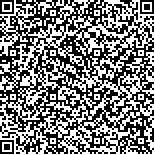下载中心
优秀审稿专家
优秀论文
相关链接
摘要

精细的农作物空间分布数据对于资源、环境、生态、气候变化和粮食安全问题均具有重要的意义,卷积神经网络已经成为从遥感影像中提取农作物空间分布数据的主要方法,但提取结果中的种植区域边缘往往比较粗糙。本文以高分二号遥感影像为数据源,选择冬小麦为提取目标,利用RefineNet模型和最大后验概率模型构建冬小麦遥感提取模型WWRSE(Winter Wheat Remote Sensing Extraction),获取精细的冬小麦空间分布数据。WWRSE模型利用RefineNet网络提取像素的语义特征,使用改进的SoftMax模型生成像素的类别概率向量;以类别概率向量的最大分量与次大分量的差值作为置信度,根据置信度将类别概率向量分为可信和不可信两组,可信组直接使用最大分量对应的类别标签作为相应像素的分类结果;结合最大后验概率模型确定不可信组像素的分类结果。利用随机梯度法对WWRSE模型进行训练。选择SegNet、DeepLab、RefineNet作为对比模型进行实验,WWRSE提取结果的精度为92.9%,比SegNet提高了13.8%,比DeepLab提高了10.9%,比RefineNet提高了8.6%。实验结果表明WWRSE模型在提取冬小麦空间分布数据方面具有一定的优势。WWRSE模型提取的结果能够为大范围冬小麦种植面积统计提供依据。
Winter wheat is one of the main food crops in China. The accurate spatial distribution information of winter wheat is crucial for yield estimation and food security. However, existing methods for extracting the spatial distribution information of winter wheat using a full convolutional neural network ignore the remote sensing imagery characteristics. The influence of differences among probabilities in the coded class probability vector on the judgment of pixel class attribution can lead to misclassification or missing points at the edge, which can affect the accuracy of the result. In this study, the RefineNet model is coupled with maximum a posteriori probability (MAP), and the WWRSE(Winter Wheat Remote Sensing Extraction) model is developed to create a method for extracting the spatial distribution information of winter wheat from a Gaofen-2 remote sensing image. The WWRSE uses the convolution RefineNet network structure to extract pixel features. An improved SOFTMAX model is used to obtain the pixel category probability vector. With the winter wheat category probability value and other categories as a poor probability vector, differences can be divided into small pixels and differences among large pixels according to the category probability vector. For large differences among pixels, the biggest probability category can be used directly as the pixel category. Small differences among pixels can be combined with the MAP model to determine the type of each pixel. Next, the model is trained using the stochastic gradient method, and the spatial distribution information of winter wheat is extracted from the remote sensing image using the successfully trained model. SegNet, DeepLab, and RefineNet were selected as comparison models. Experimental results showed that WWRSE accuracy improved by 4.2%, 7.6%, and 8.6%, compared with the comparison models. Moreover, overall extraction accuracy reached 93%, thereby indicating that the method proposed in this study has certain advantages in proposing the spatial information distribution of winter wheat. This method deeply explores the information contained in the class probability vector of the output of the full convolutional network and determines that the classification error is closely related to the small component difference in the class probability vector. Based on this finding, the classification result of the full convolution network is revised. The effectiveness and feasibility of the proposed method are proven by the experiments.

